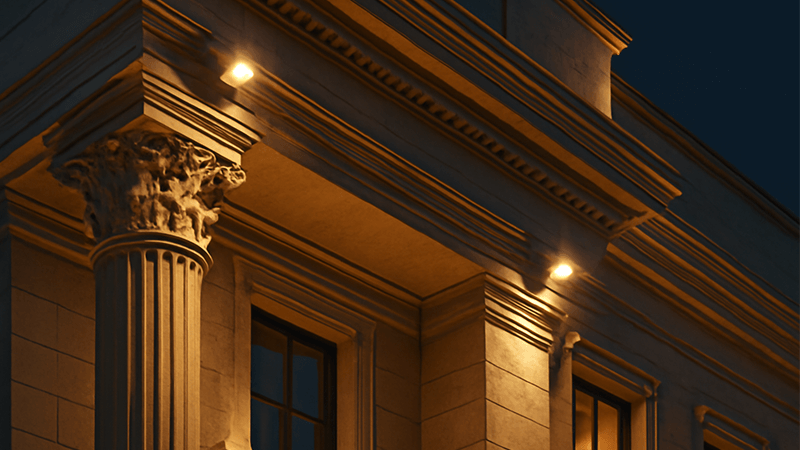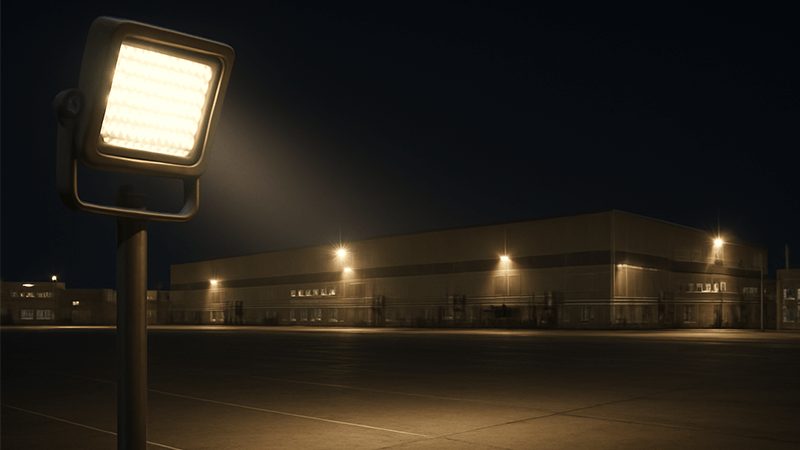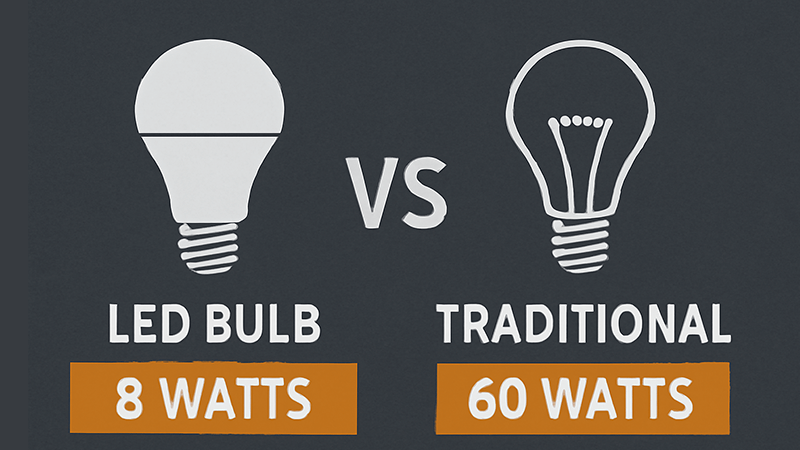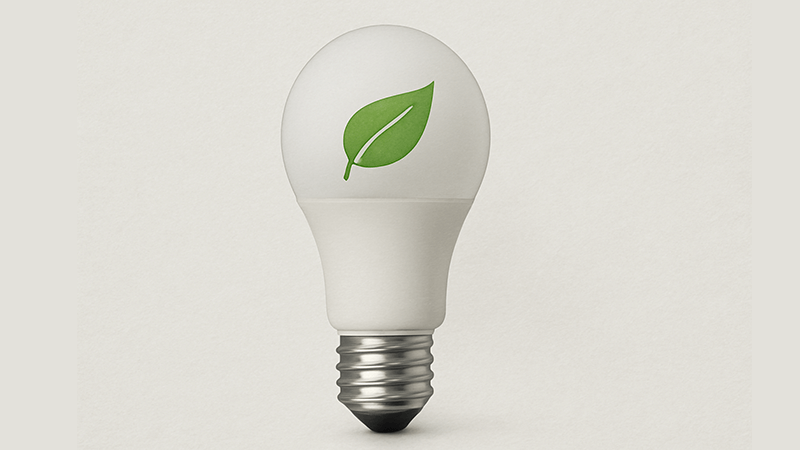Your building’s exterior looks plain and uninviting after sunset. This missed opportunity can fail to impress potential clients and visitors, making your property seem unremarkable and even unsafe.
LED floodlights are the best way to improve your facility’s aesthetic appeal. By strategically using them to highlight architectural details, create contrast with light and shadow, and add color, you can transform a plain building into a stunning visual landmark. This enhances brand image and creates a welcoming atmosphere.

For over a decade in the lighting industry, I’ve seen countless facilities transform overnight. It’s not just about adding light; it’s about using light with purpose. What was once a dark, forgettable building can become a beacon of quality and professionalism. Many purchasing managers I work with, like my friend Shaz in the UAE, know that the right lighting is an investment, not an expense. Let’s explore how you can use LED floodlights to make your facility stand out. I will break down not just the "how" but the "why," so you can make informed decisions that bring real value.
What purpose does the floodlight have and why would you use one?
You need to illuminate a large outdoor area, but you’re not sure which fixture is best. Choosing the wrong one can waste energy and create poor, uneven lighting.
A floodlight is a high-intensity, broad-beamed light fixture. You would use one to illuminate a large space for three primary reasons: security, safety, and aesthetics. It’s the go-to solution for everything from building facades and parking lots to sports fields and landscapes.

When I first started in a lighting factory, I thought floodlights were just for security at warehouses. But I quickly learned they are far more versatile. The basic idea is simple: project a lot of light over a wide area. However, the reason you’re doing it changes everything. A purchasing manager needs to know this to source the right product. You wouldn’t use the same floodlight for lighting up a beautiful historic building as you would for a high-security fence. The beam angle, color temperature, and fixture design all depend on the job.
The Three Core Functions of Floodlighting
Think of these three functions as different goals. While one floodlight can sometimes serve multiple purposes, focusing on the primary goal helps you choose the right product and design the best layout. For example, security lighting is often brighter and has a cooler color temperature to maximize visibility for cameras. Aesthetic lighting might use a warmer tone and more focused beams to create drama and charm.
| Function |
Goal |
Common Application |
Light Characteristics |
| Security |
Deter trespassers and aid surveillance. |
Fences, building perimeters, dark access points. |
Bright, wide beam, often cooler white (5000K+). |
| Safety |
Ensure people can move around safely. |
Walkways, parking lots, entrances, work areas. |
Uniform, glare-free, neutral white (4000K). |
| Aesthetics |
Highlight features and create atmosphere. |
Building facades, statues, trees, landscapes. |
Controlled beams, warm or variable colors (RGBW). |
I remember a client with a new hotel. They initially installed harsh, wide-beam floodlights everywhere for "safety." The result was a flat, overly bright property that looked more like a prison than a welcoming resort. We reworked the plan, using focused uplights to highlight palm trees and architectural columns, and soft, shielded downlights for the walkways. The light levels were safe, but the feel of the space was completely transformed. It looked luxurious and inviting, which was their ultimate goal.
What is one major benefit of using LED lighting in buildings?
You’re looking at your facility’s high energy bills and frequent maintenance costs. These expenses constantly eat into your budget and create operational headaches, distracting you from more important work.
The single most important benefit of using LED lighting is its incredible energy efficiency. LEDs use up to 80% less electricity than traditional lights like metal halide or halogen. This leads directly to huge savings on your energy bills and a much lower total cost of ownership.

For a purchasing manager like Shaz, the numbers have to make sense. When I present a lighting upgrade proposal, the first thing I highlight is the return on investment (ROI). The initial cost of LEDs can be higher than old technology, but the savings quickly pay for the investment. It’s not just about a lower electricity bill. The real benefit comes from looking at the total cost over the entire life of the product. This is where LEDs truly outperform everything else. From my manufacturing background, I know that quality LEDs are built to last, which means the savings are reliable and long-term.
Beyond Just Lower Bills: Unpacking True Cost Savings
The true financial benefit of LEDs goes far beyond just using less power. You have to consider maintenance, replacement cycles, and even secondary effects like HVAC costs.
Reduced Energy Consumption
An old 1,000-watt metal halide floodlight can be replaced by a 300-watt LED floodlight that produces the same amount of useful light. That’s a 70% reduction in energy use right away. When you multiply that by hundreds of fixtures running 12 hours a night, the savings are massive.
Lower Maintenance & Replacement Costs
A traditional metal halide bulb might last 10,000-15,000 hours. A quality LED fixture is rated for 50,000 hours or more.
| Feature |
Traditional Metal Halide (1000W) |
LED Floodlight (300W) |
| Average Lifespan |
~15,000 hours |
~50,000+ hours |
| Replacements over 50,000 hours |
3-4 times |
0-1 time |
| Labor Cost |
High (Requires lifts and electricians) |
Very Low |
A client once told me the cost of renting a boom lift to change a single failed bulb on a tall pole was more than the cost of the bulb itself. With LEDs, you eliminate that cost for years at a time. This reliability is a huge operational advantage.
Reduced HVAC Load
This is a benefit people often forget. Traditional lights get extremely hot. About 90% of the energy they use is wasted as heat. LEDs run much, much cooler. In enclosed or indoor spaces, this means your air conditioning system doesn’t have to work as hard to remove that extra heat, leading to even more energy savings.
What is the importance of effective lighting design in enhancing aesthetics and functionality?
You’ve invested in high-quality LED floodlights, but the final result looks boring or, even worse, creates uncomfortable glare. Your facility is lit, but it lacks visual appeal and sophistication.
Effective lighting design is vital because it’s the bridge between having lights and achieving a goal. For aesthetics, it guides the eye and creates a mood. For functionality, it ensures the space is safe and easy to use. A great design delivers both without compromise.

I can give anyone the best LED floodlight in the world, but if they just point it straight at their building, the result will be disappointing. It will create a flat, washed-out look with harsh shadows and likely annoy the neighbors with light spill. Good lighting design is an art. It’s about painting with light. It considers angles, intensity, color, and contrast to shape how a person perceives and interacts with a space. The goal is to make the building look even better at night than it does during the day. This requires planning and a deep understanding of how light behaves.
Balancing Light and Shadow: The Art of Design
Great aesthetic lighting isn’t about eliminating shadows; it’s about creating them with intention. Contrast is what gives a building depth and dimension at night.
Key Lighting Techniques
- Wall-Washing: This technique creates a smooth, even layer of light across a large surface. It’s great for making a space feel bright and open. You achieve this by placing fixtures at a distance from the wall with a wide beam angle.
- Wall-Grazing: This is the opposite. You place the fixture very close to the wall and aim the light almost parallel to the surface. It’s a dramatic technique that makes textures like brick, stone, or ribbed panels pop.
- Uplighting: Aiming light upwards is a classic way to make a building feel grand and important. It’s perfect for columns, statues, and trees. The key is to control the light so it doesn’t just shoot up into the night sky.
The Biggest Enemy: Glare
The single fastest way to ruin a good lighting project is glare. It’s uncomfortable for viewers and looks unprofessional. As a professional, you must know how to control it.
| Problem |
Solution to Control Glare |
How It Works |
| Upward Light Pollution |
Use full cut-off or cut-off fixtures. |
A shield or specific optic design directs all light downward, below the fixture’s horizontal plane, preventing it from polluting the sky. |
| Direct Visual Glare |
Add external shields, baffles, or louvers. |
These accessories act like blinders, blocking the light source from being directly visible from normal viewing angles. |
| Reflective Glare |
Adjust the fixture’s mounting angle. |
By carefully aiming the light, you can prevent it from creating bright "hot spots" on reflective surfaces like windows or water features. |
A lighting expert like Shaz knows that specifying a fixture with good glare control is non-negotiable for high-end projects. It’s the difference between a cheap installation and a professional one.
What are the environmental benefits of using LED lights compared to traditional lighting?
You want your company to operate more sustainably, but many eco-friendly initiatives seem complex and expensive. You’re looking for practical changes that have a real, measurable positive impact on the environment.
LED lights offer significant environmental benefits. They drastically cut electricity use, which lowers carbon emissions. Their long lifespan means far less waste goes to landfills. And crucially, they contain no toxic materials like mercury, making them safer for everyone and easier to dispose of.

When I started my business, my primary focus was on quality and performance. But over the years, the environmental aspect has become just as important, both for me and my clients. Companies are increasingly being judged on their environmental footprint. Switching to LED lighting is one of the easiest and most impactful "green" decisions a facility manager or owner can make. It’s a clear win-win: you save money while also doing the right thing for the planet. The technology has advanced so much that there is no longer a trade-off between performance and sustainability.
The positive environmental impact of converting to LED is multi-faceted. It’s not just one thing; it’s a chain reaction of benefits.
This is the most direct benefit. Power plants produce carbon dioxide (CO2) to generate electricity. Since LEDs use up to 80% less energy, your facility is responsible for far less CO2 emission. For every 1000-watt metal halide you replace with a 300-watt LED, you are cutting the associated carbon footprint by 70%. Over the lifetime of thousands of fixtures, this adds up to tons of CO2 saved.
Less Material Waste
Think about the entire product lifecycle. An LED floodlight lasts 3-5 times longer than a traditional one. This means less manufacturing, less raw material extraction, less packaging, and less fuel used for transportation. Instead of manufacturing, shipping, and disposing of four metal halide bulbs, you only need to do it once for one LED fixture.
No Hazardous Materials
This is a critical point that many people overlook. Compact Fluorescent Lights (CFLs) and High-Intensity Discharge (HID) lamps like metal halide and high-pressure sodium contain mercury, a potent neurotoxin. When these bulbs break or are thrown away improperly, that mercury can contaminate soil and water. LEDs contain no mercury or other hazardous heavy metals, making them much safer to handle and dispose of. For a purchasing manager, this also means avoiding complex and costly hazardous waste disposal procedures.
| Feature |
Traditional Lighting (HID/CFL) |
LED Lighting |
| Energy Impact |
High electricity consumption. |
Low electricity consumption. |
| Carbon Footprint |
Large. Contributes significantly to emissions. |
Small. Drastically reduces emissions. |
| Waste Impact |
Short lifespan leads to frequent replacement and waste. |
Long lifespan minimizes material waste. |
| Toxic Materials |
Contains mercury, requiring special disposal. |
Contains no mercury or hazardous substances. |
Conclusion
Ultimately, LED floodlights can dramatically elevate your facility’s aesthetic appeal. By focusing on smart design, you save money, improve safety, and operate more sustainably, turning your property into a landmark.